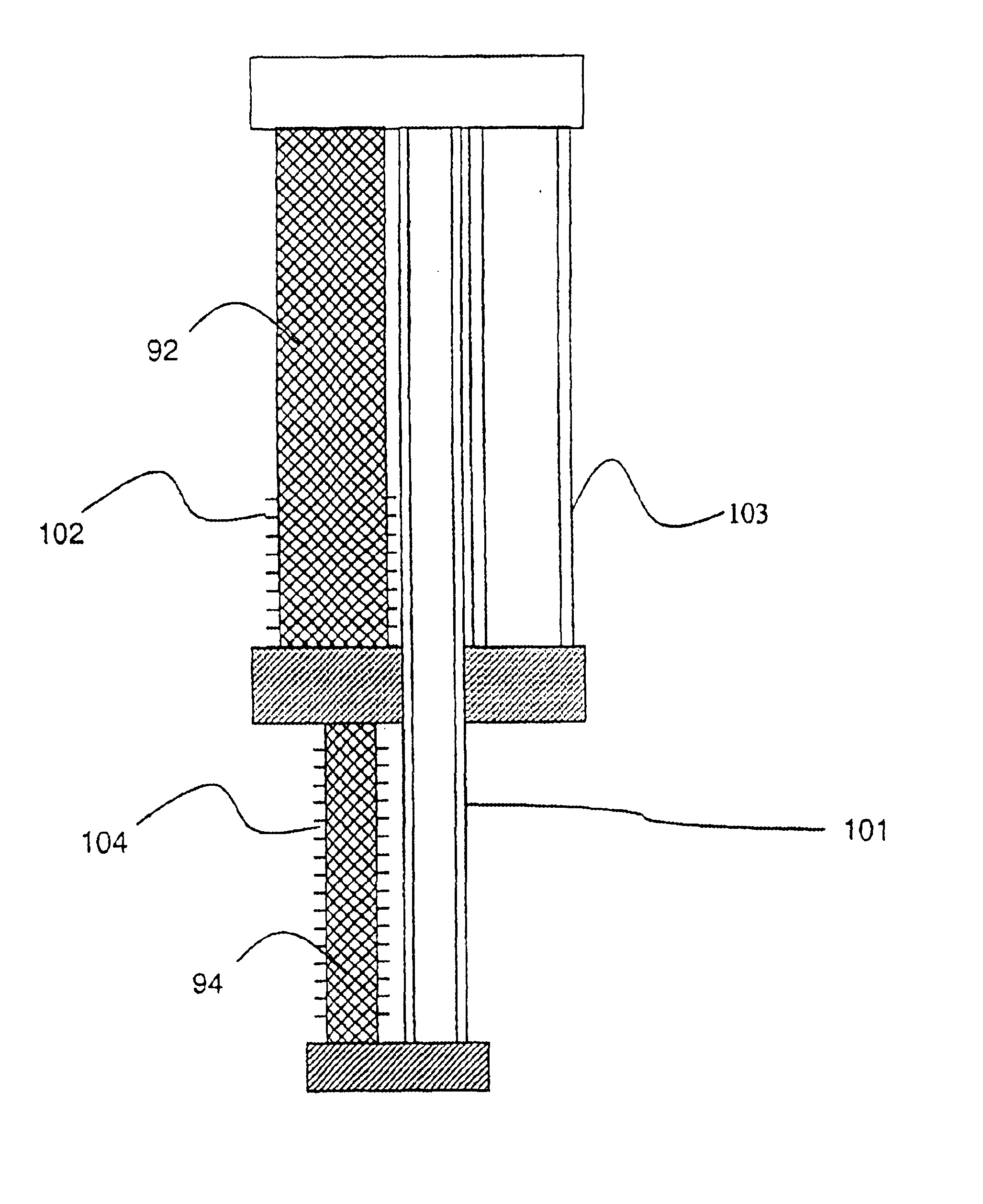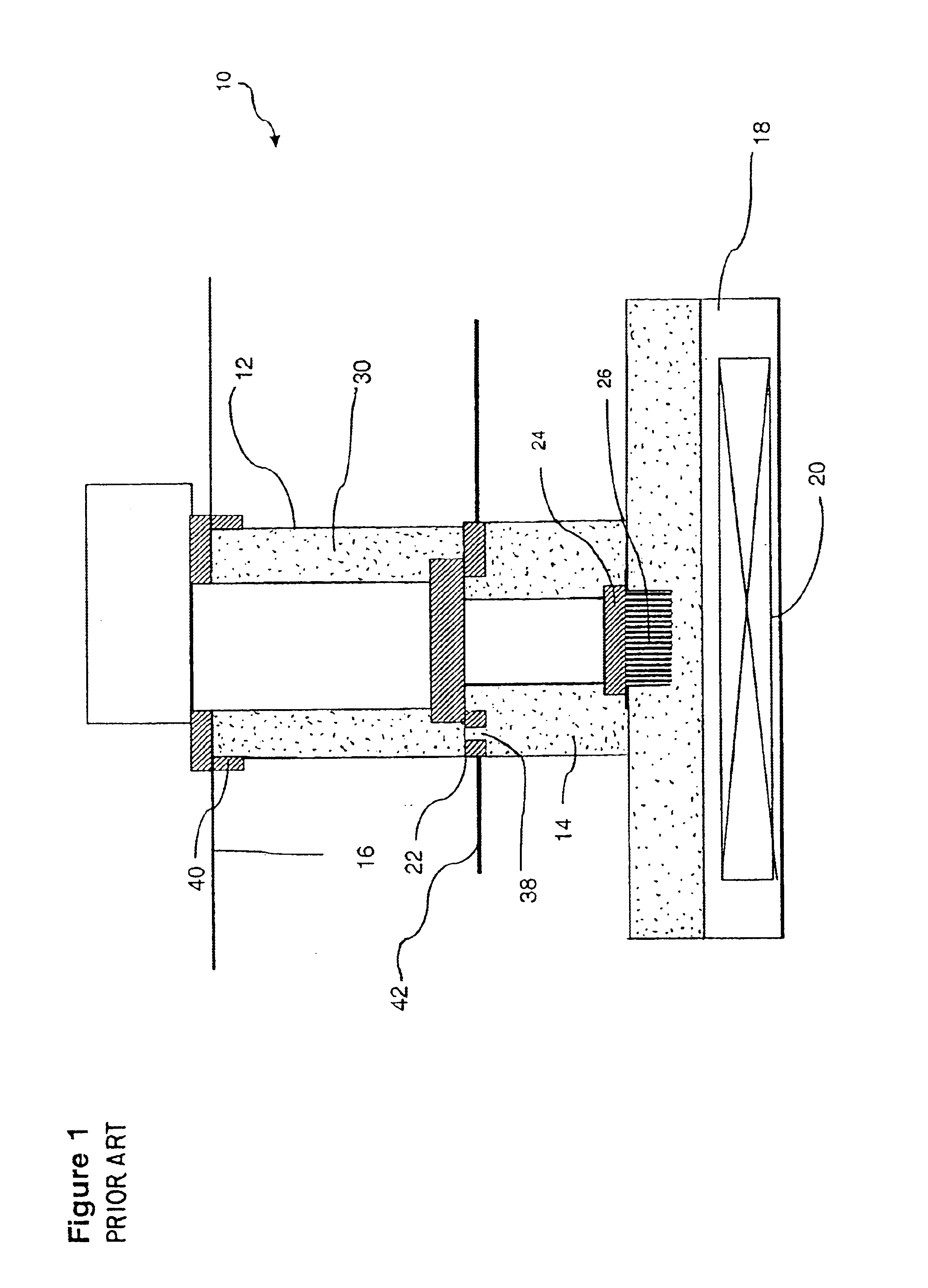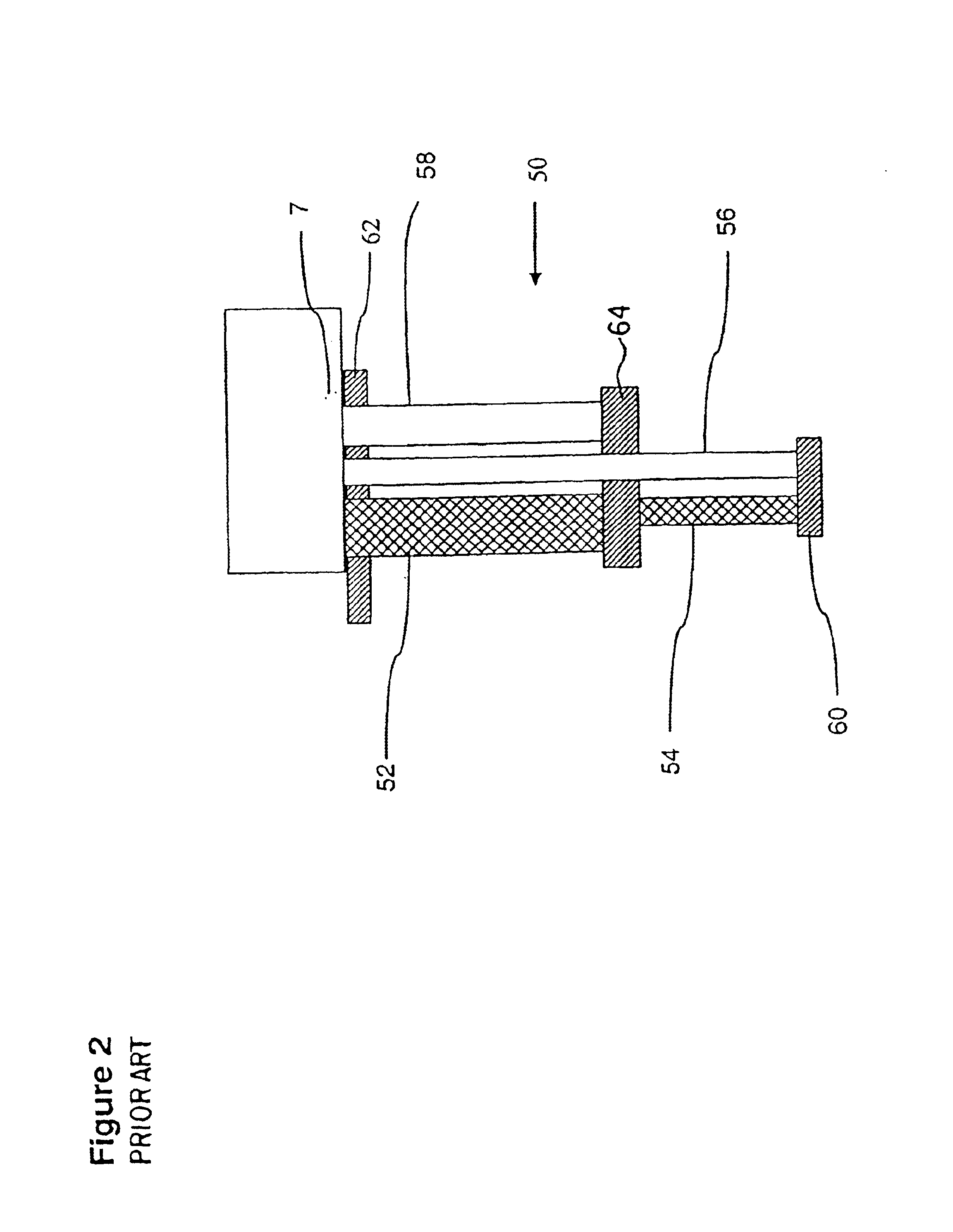Pulse tube refrigerator
a refrigerator and pulse tube technology, applied in the field of pulse tube refrigerators, can solve the problems of volume to part boil off, huge losses in natural convection, and difficult service operation, and achieve the effects of increasing the cooling power of the distributed regenerator, enhancing heat transfer, and enhancing cooling power
- Summary
- Abstract
- Description
- Claims
- Application Information
AI Technical Summary
Benefits of technology
Problems solved by technology
Method used
Image
Examples
Embodiment Construction
[0024]There will now be described, by way of example, the best mode contemplated by the inventors for carrying out the invention. In the following description, numerous specific details are set out in order to provide a complete understanding of the present invention. It will be apparent, however, to those skilled in the art, that the present invention may be put into practice with variations from the specific embodiments.
[0025]Referring now to FIG. 6, there is shown a first embodiment of the invention, wherein a 2-stage PTR arrangement 90 is shown. Regenerator tubes 92, 94 and pulse tubes 96, 98 are shown with regenerator tube 94 being finned.
[0026]FIG. 6A shows a cross-section through the regenerator tube 94 showing annular fin 104 surrounding tube 94 in the form of an annular disc. Conveniently the tube wall and the fins are manufactured simultaneously, preferably from the same material which is moderately thermally conductive, such as an austenitic stainless steel. Other materia...
PUM
 Login to View More
Login to View More Abstract
Description
Claims
Application Information
 Login to View More
Login to View More - R&D
- Intellectual Property
- Life Sciences
- Materials
- Tech Scout
- Unparalleled Data Quality
- Higher Quality Content
- 60% Fewer Hallucinations
Browse by: Latest US Patents, China's latest patents, Technical Efficacy Thesaurus, Application Domain, Technology Topic, Popular Technical Reports.
© 2025 PatSnap. All rights reserved.Legal|Privacy policy|Modern Slavery Act Transparency Statement|Sitemap|About US| Contact US: help@patsnap.com



